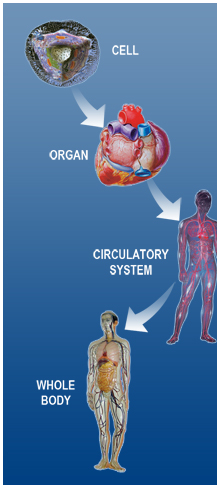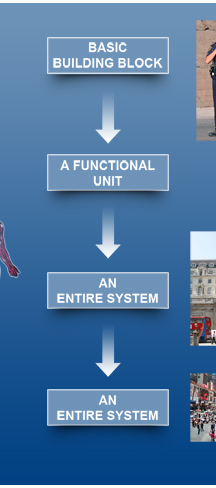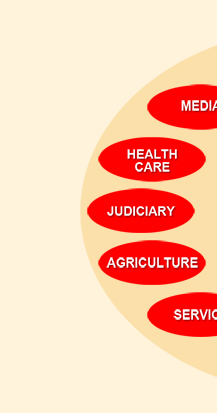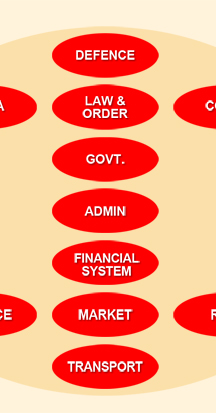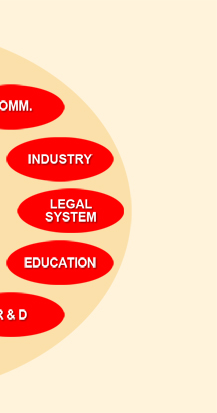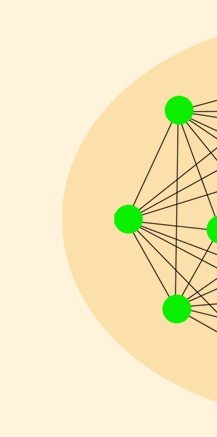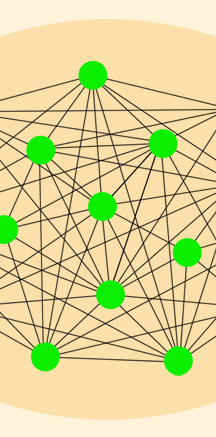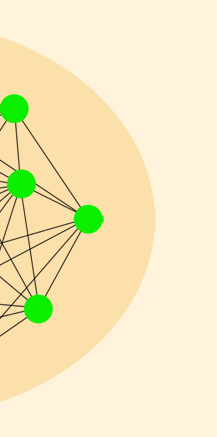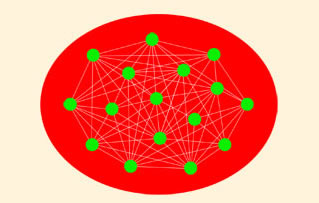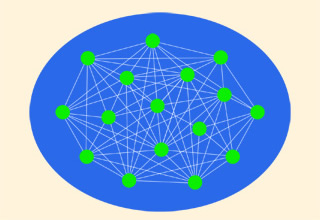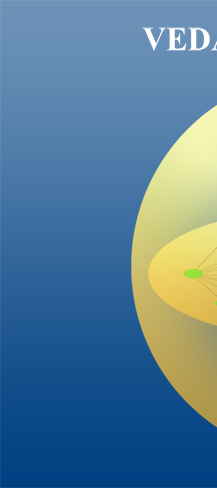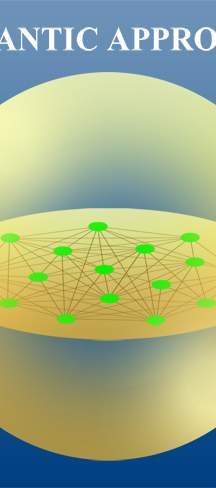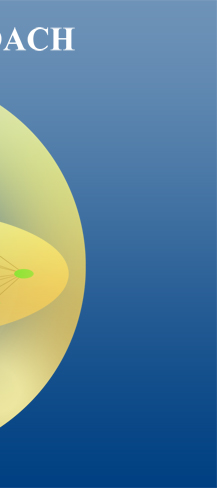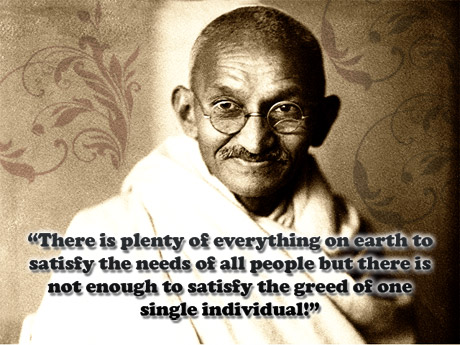"THE MANIFESTO" - A VISION WE WISH TO EXPLORE
By Prof. G. Venkataraman
This article has 4 parts and an Appendix |
|||||
THE RELEVANCE OF SWAMI’S TEACHINGS TO DAILY LIFE AND THE MANY CRISES HUMANS HAVE CREATED FOR THEMSELVES! As a prelude to the point I shall be bringing up shortly, I would first like to draw your attention to an amazing parallel between the human body and human society, which Swami often discussed in the past. While the body was created by God, society has been built up by humans. A live body is full of energy and active and so is a live society; which is why terms like healthy society, sick society, etc., are sometimes used to describe the latter entity. Concerning the parallel, Swami says a body has a hierarchy starting with cells at the bottom, going up all the way to the body as a whole, as shown in an accompanying illustration. The same holds in the case of human society also. Here the individual is the basic building block. Next, individuals come together to run and operate functional units like a bank, a school, a post-office, a hospital, a police station, and so on. At a still higher level, we have systems like the financial system, the educational system, the healthcare system, and so on. These systems have their own internal autonomy. Yet they are interleaved, and must work in harmony with each other if society is to run smoothly. In passing, it is important to note that the human body also has many systems [e.g., the respiratory system, the circulation system, the digestive system, etc.,] which are autonomous in a certain sense but work synergistically to support the body. PARALLELS BETWEEN THE HUMAN BODY AND SOCIETY
Drawing upon the facts stated above, Swami says that the best way for a society to remain healthy is to adopt the Operating System (OS) of the healthy body. What is the core principle of the OS of the healthy body? At every level, there is selfless activity, both in an upward as well as a downward sense, always for the larger good, i.e., the health of the body as a whole. When every entity from the cells upwards works selflessly to keep the body healthy, the body for its part looks after all its constituents right down to the lowest level by providing the required nourishment and care via appropriate oxygen intake, water intake, intake of balanced food, disciplined life, exercise, rest, and so on. Obviously, if the same sort of thing happens in a society we would have nothing short of utopia. But is that what we see around us today? Hardly, and the reason is not far to seek. By and large, people have become so hyper-individualistic that most of the time they are driven by selfishness and self-interest and of course greed, to which there seems to be no limit. Indeed, so bad have things become that these days people talk of countries that have become failed states and others that are on the verge of becoming so. If you think about it, that is real bad news. Thus rabid selfishness and rapacious greed can wreck an entire country, and that is how spirituality acquires relevance to mundane life; I hope you are beginning to see the broad picture. Let us dig a bit deeper, starting with Fig. 1 which lists many of the functional systems that form a part of every modern nation today.
All the systems in Fig. 1 are interconnected in a complex manner as schematically shown in Fig. 2.
Every country follows some kind of a socio-economic philosophy, the two favourite models being the free-market philosophy and the welfare-state model, shown schematically in Figs. 3 and 4, colours red and blue representing the two opposite philosophies.
People have argued endlessly as to which of these two economic systems is better. History has shown that though on paper both systems look great, in practice neither system has worked out all that well, the reason for which is not far to seek. It’s very simple really; for any system to work properly, people must at all levels be honest and not greedy. As Swami says, Without individual character, there cannot be any national character. In practice, however, in every system that man has devised there are some who are successful while others are not; this is unavoidable to some extent. But if inequity is created largely via deceit and is in addition huge, then there would be problems for sure; and that precisely is what we are now seeing in many parts of the world.
The question now becomes: “Is there no way out?” There is, as shown schematically in Fig. 5, where we see society embedded in a ‘Golden Sphere’ that represents a transcendental regime of basic moral values. In this situation everyone bows to an overriding moral imperative, which automatically keeps the forces of greed and grab down at least to some extent, allowing thereby a spirit of share and care to prevail. The duality inherent in the ‘red’ and ‘blue’ models more or less disappear in this ‘spiritual model’, leading thereby to a certain measure of harmony, and that in essence is what Swami’s approach is all about. Keeping this in mind, let us go back for a minute to the water crisis I discussed earlier. From the numerous facts and figures I have cited, it is clear that the world is headed for a water crisis with rather painful consequences, unless we boldly decide to change our ways and do the following:
And so on the list goes. I took the issue of water merely to exemplify the kind of problems that come up when greed takes over and starts causing distortion in human behaviour.
Greed has always existed, which is why the scriptures of all religions condemn it. And thanks to the ambience that prevailed in an earlier era, greed was also contained to some extent. The relatively small population of the planet at that time also helped. Once technology entered the picture and we had alongside a population explosion, things really began to get out of control. As Gandhi is reported to have said, “There is plenty of everything on earth to satisfy the needs of all people but there is not enough to satisfy the greed of one single individual!” That says something about the voracious appetite of a greedy person. Imagine now what can happen when tens of thousands use their knowledge, muscle, economic power and commercial pull, to achieve “progress, development and success” via greed-based manipulation. Malpractice then rapidly enters practically every walk of life, from education to healthcare, and society begins to suffer massively. No country is spared, and both the rich as well as the not-so-rich get affected, though in somewhat different ways. That is when unrest becomes widespread, disturbances erupt, conflicts arise, and so on. Simply stated, ashanti [which is the opposite of the word Shanti we chant at the end of bhajans] takes root. Just look at what is happening around the world in country after country. A good many of them are in deep economic trouble, thanks to all sorts of shady practices by people who were interested in amassing wealth, even if it was at the cost of a large number of unsuspecting individuals. As I write this, there is trouble all across the Middle East. In neighbouring Pakistan which was first hit by a huge earthquake and more recently by an unimaginable flood, it is estimated that over fifty millions have been plunged into great misery and untold suffering. But alas, as happens often, exploitation also is high in regions where suffering is acute. So it all comes down to the manifestation of basic humanness. As Swami often asks of us: “How can you call yourself human, if your behaviour does not match the form God has blessed you with?” The point I am making is that integrity and character are a must in every aspect of daily life. These virtues do not drop like manna from heaven. They are embedded deep in our Hearts and have to be coerced to emerge from there, where they have been kept caged by negative tendencies such as kama [desire], krodha [anger], lobha [stinginess], etc. If you recall that spirituality is all about getting rid of the negative tendencies just mentioned, then you would realise what a boon it would be for humanity, if the majority of people live their lives according to a moral code. Not only would people stop hurting each other in a thoughtless manner as they often do these days, but, equally important, people would exercise restraint, place a ceiling on desires and help each other, particularly via love and care. |
|||||||||||||||||||||||||||||||||||


